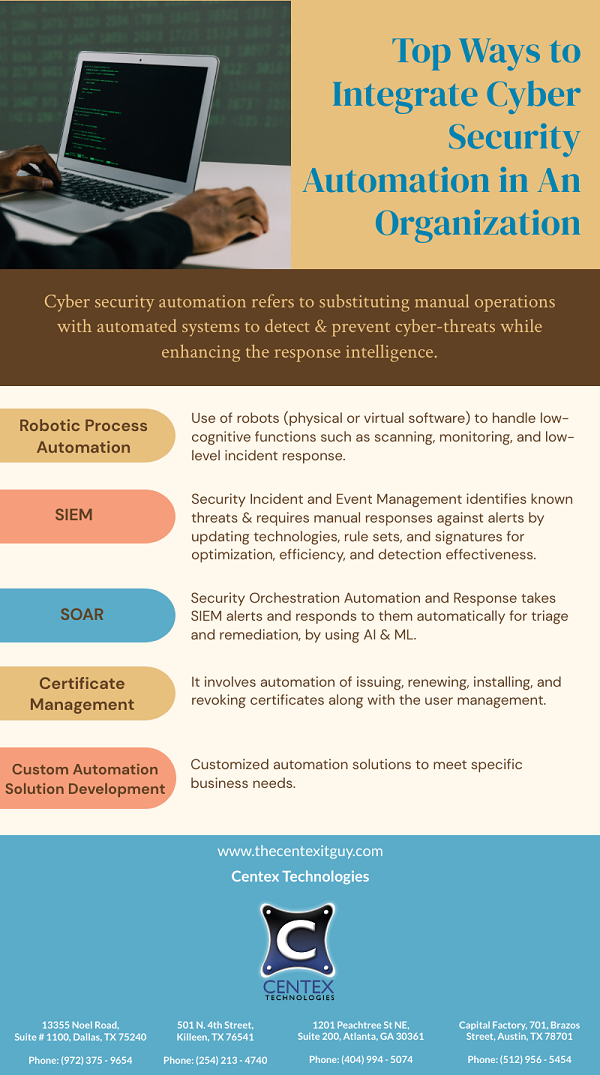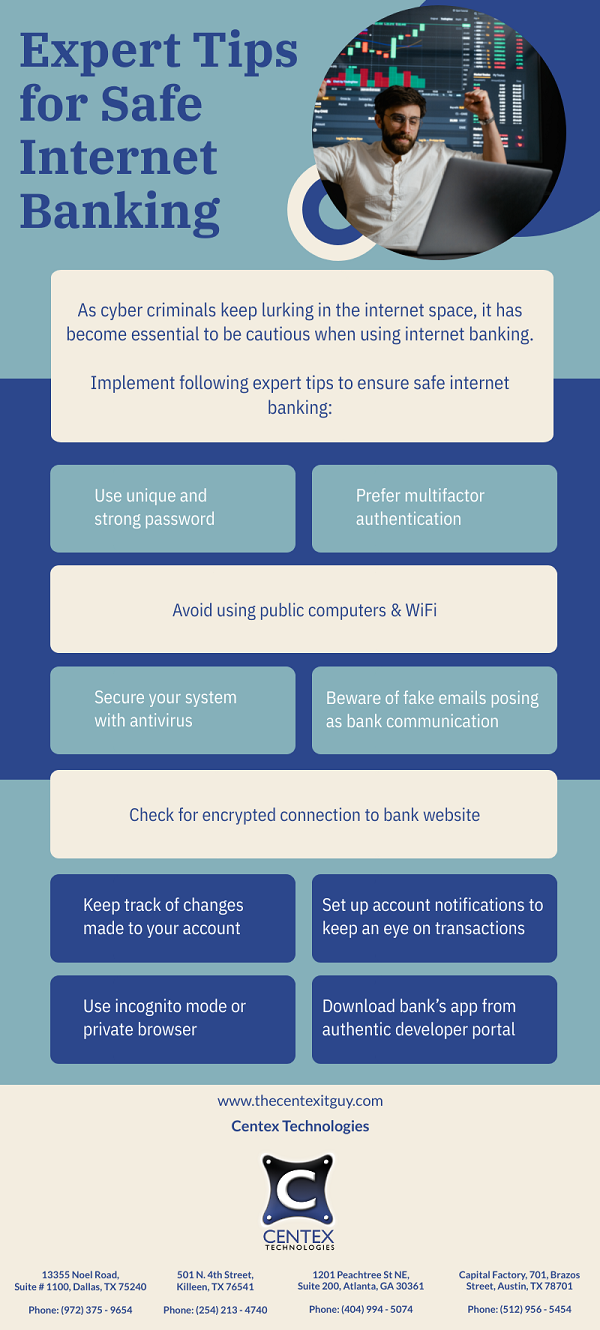PDF Version: top-ways-to-integrate-cyber-security-automation-in-an-organization
Tag: Cyber Security Page 7 of 41
The Internet has given rise to diverse learning opportunities for students. It has taken down the location barriers and has made it easier for students to connect with their peers, consult subject experts, and use online study material on a global stage. While this has increased their exposure to a wide range of opportunities, it has also piqued the interest of cybercriminals.
Why Are Hackers Interested in Students?
A major misconception in reference to cyber security is that hackers are motivated by financial gains alone and thus target large organizations only. While direct financial gains are the major motivating force behind cyber-attacks, the attackers may target individuals for other motives, such as identity theft, personality maligning, stalking, etc. These motives may or may not end in financial gains.
These are some of the reasons why hackers target students are:
- Easy Target: Students pose as easy targets for hackers. They are not highly aware of the latest cyber threats, making them easy prey. Additionally, school networks are protected by IT professionals. However, it is not practically possible for school IT professionals to protect the student-owned device. With inadequate security measures, student devices are at a high risk of cyber-attacks.
- Multiple Devices: Students generally use multiple internet-accessing devices such as smartphones, laptops, tablets, desktops, and smartwatches. As the number and types of devices increases, it enlarges the attack surface for hackers. This increases the probability of becoming a victim to a cyber-attack.
- Social Media: Students share pictures, routine activity, and life updates on social media. This offers hackers an opportunity to track their activity and steal personal information. This information can be used to build fake profiles and launch attacks such as identity theft, stalking, cyber-bullying, etc.
- Clean Credit History: Students have a clean credit history. Hackers target students’ credit history and use it to get credit approvals, take out loans, etc.
How Do Hackers Target Students?
Hackers use diverse types of cyber-attacks to target students. Common cyber-attacks targeting students are:
- Data Theft: Students enter their details when logging in to online learning portals, shopping sites, etc. Hackers target such portals to get information and further use for malicious activities.
- Phishing: Phishing attacks are launched by sending an authentic-looking email or message containing a malicious link. Once students click the link, they are directed to a malicious website where their information is collected or malware is downloaded on their system.
- Scholarship Scams: Hackers design fake websites or pages that promise students a scholarship in exchange for a fee. This type of attack is used to steal both financial and personal details entered by the students.
- Filesharing Risks: Hackers trick users into using free Peer-to-Peer filesharing services that expose the device to viruses or malware.
- Webcam Hacking: This is a spyware or stalking attack. Also known as Camfecting, hackers encourage students to download malicious links containing spyware. Once installed, hackers gain access to the webcam of the infected device.
- Social Engineering: Social engineering attacks are performed by monitoring social media activity or hacking social media accounts. This type of attack is aimed at tarnishing reputation or blackmailing.
Contact Centex Technologies at Killeen (254) 213 – 4740, Dallas (972) 375 – 9654, Atlanta (404) 994 – 5074, and Austin (512) 956 – 5454 for information on how to safeguard personal devices and online accounts from cyberattacks.
A supply chain is a network of facilities that are responsible for the procurement of raw materials, the transformation of those raw materials into intermediate commodities, and finally, the delivery of finished goods to end users via a distribution system. It is the network of organizations, people, activities, information, and resources involved in the delivery of a product or service to a customer. While these supply chain components are essential for smooth operations of a business, they can also expose a business to cyber security risks.
The following tips can help in improving cybersecurity for supply chain network of a business.
- Verify Third-Party Vendors: Prevention is the most effective method for enhancing the cybersecurity of a supply chain. Cybercriminals find third-party vendors to be an easy and lucrative target, as a majority of third-party vendors have inconsistent cybersecurity protocols. Once attackers infiltrate the network of these vendors, they can acquire access to their client’s data. This makes it important to assess the cyber security practices of the third-party vendors to check if they are as per the industry standards. Also, analyze the history of cyber security breaches the third-party vendors have experienced in the past.
- Access Management: Understand the role and responsibilities of the vendor. Analyze the tasks the vendor needs to perform and the data that is essential to accomplish them. Grant access to the necessary data and tools to the vendor instead of providing open access. This ensures minimized exposure in case the vendor experiences a breach.
- Understand the Risks: Knowing the risks you may encounter is essential to formulate an effective mitigation plan. To begin with, list all cyber security risk scenarios through which cybercriminals can infiltrate your network. Once you understand the risks, work towards mitigating these risks starting with the risk with highest impact.
- Know Your Critical Systems: Critical systems and data include the information and systems that are essential for smooth operations of a business. These systems and data may include user data, business documents, financial data, communication channels, business core applications, etc. Knowing your key systems allow you to know what must be protected in all situations. Develop strategies to safeguard these systems and data.
- Speed Up Detection: Despite effective measures, understand that you might face supply chain based cyber-attacks. Early detection of infiltration helps in timely response, recovery, and remediation of the breach. Educate your employees to be able to detect an attack at first instance and report it to the right department.
- Recovery Plan: Lay out a well-defined recovery plan and document it. Make sure to include every employee’s role in the recovery plan and share it across the organization. Take regular backups to aid in data recovery and minimize the impact of a breach.
- Penetration Analysis: Cyber security is a dynamic environment as cybercriminals come up with new methods to bypass security measures. Regular penetration analysis and vendor monitoring help in detecting vulnerabilities at the earliest. This helps in preventing zero-day attacks.
To know more about tips to improve supply chain cyber security, contact Centex Technologies. You can contact Centex Technologies at Killeen (254) 213 – 4740, Dallas (972) 375 – 9654, Atlanta (404) 994 – 5074, and Austin (512) 956 – 5454.
With the holiday spirit on a high, it is the season for shopping.
Online shopping has taken over as the preferred method of shopping due to a change in consumer behavior. Since more and more people are choosing to shop online, businesses are shifting to online retailing to take advantage of the opportunity. However, this has also given a chance to cyber criminals to exploit vulnerabilities and trick users into fraud.
Given the rising cyber threats, here is a list of cyber security challenges online retailers need to be aware of this holiday season:
- Botnet Attacks: A botnet attack is an attack where a large number of internet-connected devices are infected by malware and are then used to launch cyber attacks as a bot network. Botnet attacks against online retailers or e-commerce sites usually involve advanced bots to bypass their cyber security system. An advanced bot is trained to imitate human behavior when accessing a browser. One of the most common forms of botnet attacks is Traffic Overload or DDoS attack. A large network of bots sends multiple redundant requests to the server of the online retailer site to cause traffic overload. As a result, the server is not able to receive requests from the customers resulting in Distributed Denial of Service. These attacks are majorly used to disrupt the business during peak shopping season.
- Unauthorized Account Access: These attacks rely on credential theft to access users’ or retailers’ accounts. User accounts typically include gift cards, discount vouchers, and stored financial information such as credit card details. While this can result in financial loss for users, threat actors can also target retailers using intercepted user accounts. They can make fraudulent purchases using merchants’ simple financing options over the holiday season.
- Malware/ Ransomware: As the holiday season is a busy time of the year for retailers, cybercriminals try to disrupt operations by installing malware or ransomware. Attackers may exploit vulnerabilities in the code or may run a social engineering attack to hack into the system.
- Redirection Attacks: Cybercriminals analyze online retailer websites to find vulnerabilities they can exploit. Once they find a vulnerability, they utilize this chance to insert malicious code injections. These codes are generally added to the payment page of the website. When a user clicks on this malicious code, he is redirected to a fake website that is built to mimic the original payments page. The user is requested to provide financial details to make the payment & finalize his purchase. These details are sent by the server to a threat actor who can use it for financial or credential theft.
Online retailers need to be cautious to prevent these attacks. Common preventive measures include installing regular updates to patch vulnerabilities, implementing access management strategies, promoting multi-factor authentication for user accounts, etc.
To know more about cyber security challenges for online retailers, contact Centex Technologies. You can contact Centex Technologies at Killeen (254) 213 – 4740, Dallas (972) 375 – 9654, Atlanta (404) 994 – 5074, and Austin (512) 956 – 5454.


